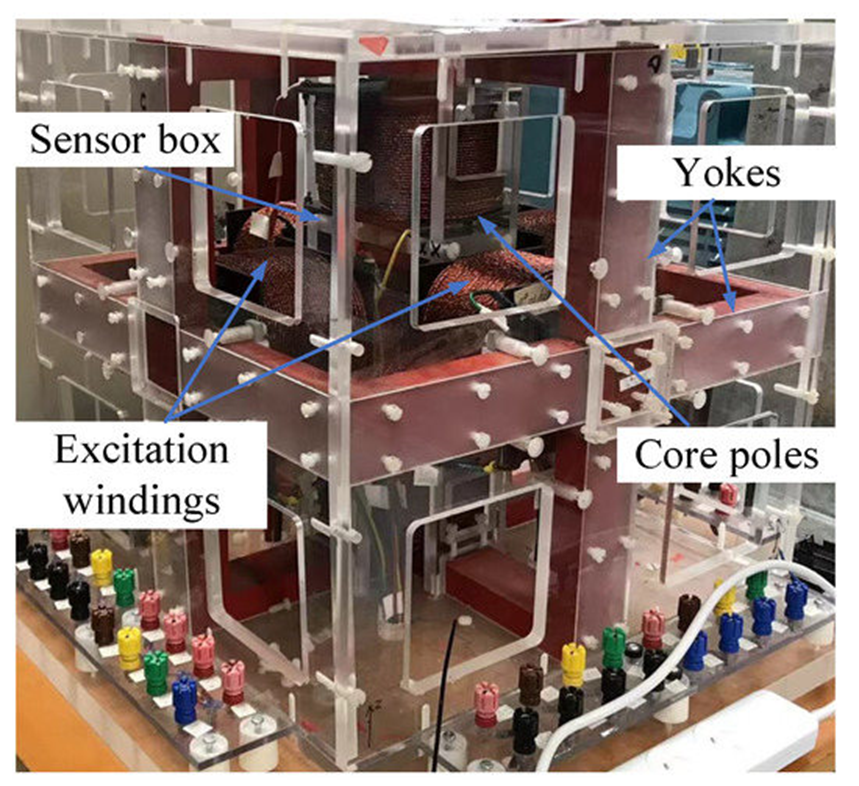Designing High-Power-Density Electric Motors for Electric Vehicles with Advanced Magnetic Materials
This paper provides an overview of the key technologies for designing high-power-density electric motors for EVs with high reliability and system-level optimal performance, with the focus on advanced magnetic materials and the proper modeling of core losses under two-dimensional or three-dimensional vectorial magnetizations.

Figure 4. A photo of the 3D vectorial magnetic property measurement system.
As we face issues of fossil fuel depletion and environmental pollution, it is becoming increasingly important to transition towards clean renewable energies and electric vehicles (EVs). However, designing electric motors with high power density for EVs can be challenging due to space and weight constraints, as well as issues related to power loss and temperature rise. In order to overcome these challenges, a significant amount of research has been conducted on designing high-power-density electric motors with advanced materials, improved physical and mathematical modeling of materials and the motor system, and system-level multidisciplinary optimization of the entire drive system. These technologies aim to achieve high reliability and optimal performance at the system level. This paper provides an overview of the key technologies for designing high-power-density electric motors for EVs with high reliability and system-level optimal performance, with the focus on advanced magnetic materials and the proper modeling of core losses under two-dimensional or three-dimensional vectorial magnetizations. This paper will also discuss the major challenges associated with designing these motors and the possible future research directions in the field.
Authors: Youguang Guo, Lin Liu, Xin Ba, Haiyan Lu, Gang Lei, Wenliang Yin, and Jianguo Zhu
In the same category
- A Smart Battery Management System for Electric Vehicles Using Deep Learning-Based Sensor Fault Detection
- Autel Energy Europe at AEC 2024: Pioneering the Future of Ultra-Fast EV Charging
- Baden-Württemberg International: Your partner for a successful expansion
- Business Region Goteborg : Gothenburg - Pioneering tomorrow's mobility
- Charging Electric Vehicles Today and in the Future
- Comparative Study of Permanent Magnet, Conventional, and Advanced Induction Machines for Traction Applications
- Design Methodology and Circuit Analysis of Wireless Power Transfer Systems Applied to Electric Vehicles Wireless Chargers
- Designing High-Power-Density Electric Motors for Electric Vehicles with Advanced Magnetic Materials
- Energy and Environmental National Assessment of Alternative Fuel Buses in Morocco
- Energy Management and Optimization of Large-Scale Electric Vehicle Charging on the Grid
- Fuel Cell Hybrid Electric Vehicles: A Review of Topologies and Energy Management Strategies
- Numerical Simulation of Cooling Plate Using K-Epsilon Turbulence Model to Cool Down Large-Sized Graphite/LiFePO4 Battery at High C-Rates
- Using an Intelligent Control Method for Electric Vehicle Charging in Microgrids
- Will Utrecht become the world's first bidirectional city?